La Tolteca 2.0 Issue #7: ¡Qué viva la música!
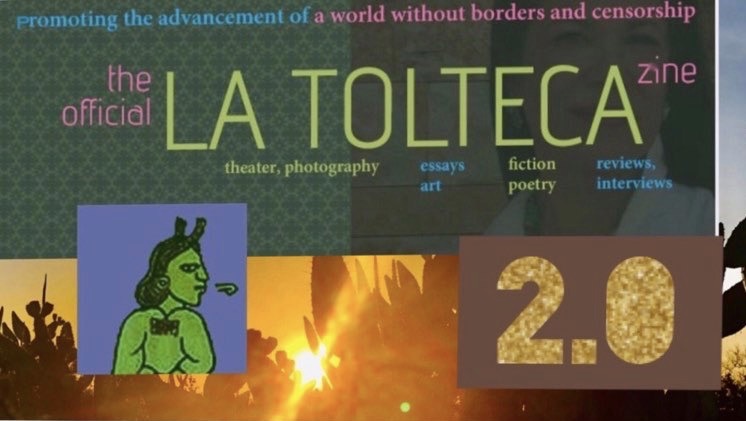
La Tolteca 2.0 #7 October 2, 2020
Bien venidos/as to L/T 2.0 #7. You don’t have to be a Boomer to check us out, contribute or identify with the creatives–thrivers and survivors of these most unprecedented of times–that we feature. If you are, however, we are here for you. In these United States we are in the midst of national elections during a world pandemic. Climate change has come throughout the land in draught, fire and rain. In spite of pain and loss all around, creatives of every generation continue to produce their work.
L/T 2.0 proudly features here five (5) who’ve been metaphorically through draught, fire and rain with quarantine, job loss, gender, age, ethnic, sexual orientation and class discrimination and illness. Also, we introduce an emerging poet and newly minted professor. If you haven’t heard of them, we’re happy to present. If you are long-time fans, continue to follow their works and importantly, let them know by leaving a supportive comment here.
To all our readers, please stay safe, be well, and register to vote out #45. The arts, education, freedom of speech are in peril as are the safety and well-being of millions.

You don’t have to be a Babe-Boomer or Brown to submit a selfie or fave pic of yourself: ana@anacastillo.net.
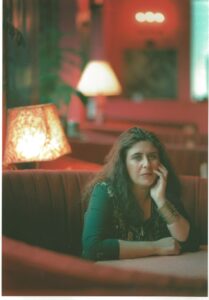
Marguerite Horberg, Photo Credit: Marguerite Horberg. Chicago cultural and political activist, founder of the renown music club and cultural center, HotHouse.
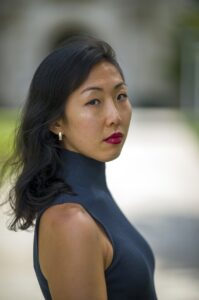
Joey Kim, see her Sijo poem here. Photo credit: Ayendy Bonifacio

LUIS ALBERTO AMBROGGIO, poeta y académico hispano-estadounidense

Areceli Esparza, “For me, being a Latinx writer means to be able to catch fires, to bring forth something from labor and sweat, to have enough when there’s not a lot.”

Veterana of the Royal Chicano Air Force, Lorraine García-Nakata, Photo credit: Jeffrey Lazos Ferns. Her feature in this issue.

Nacha Mendez, composer, singer, guitarist, resides in Santa Fe, New Mexico.
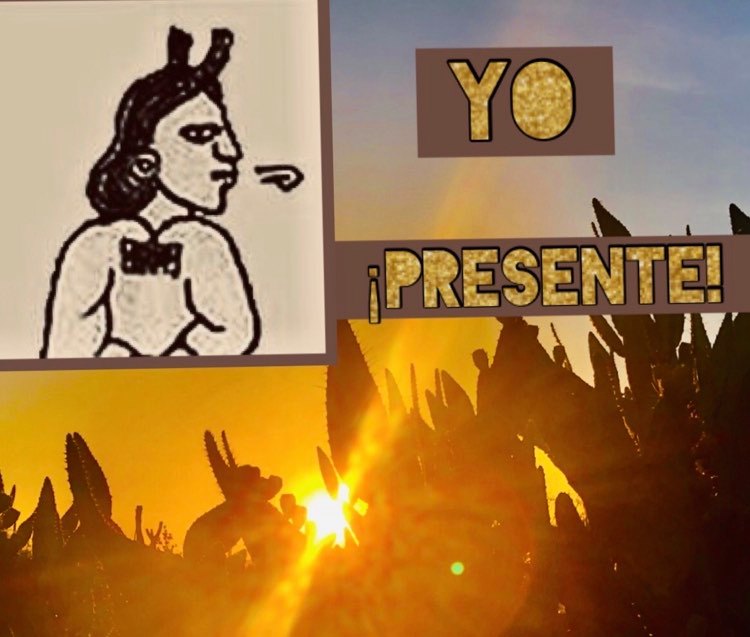
Marguerite Horberg (Testimonial) 
(Editor’s note from HotHouse website:
HotHouse was an institution that fundamentally changed the paradigm of community-based cultural centers in Chicago. HotHouse primarily showcased artists who were working in non-commercial genres, whose work was experimental, or from populations who were under-recognized and disenfranchised by either other arts institutions or the commercial 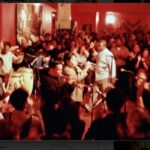 marketplace. Each year, HotHouse hosted over 500 multi-arts programs that attracted 70,000 people. By 2006, HotHouse had evolved into a $2M organization employing 45 people and had become one of the country’s most well regarded centers for international culture. The new HotHouse attenuates the previous iterations of this iconic cultural center
marketplace. Each year, HotHouse hosted over 500 multi-arts programs that attracted 70,000 people. By 2006, HotHouse had evolved into a $2M organization employing 45 people and had become one of the country’s most well regarded centers for international culture. The new HotHouse attenuates the previous iterations of this iconic cultural center
Here we feature an excerpt of a memoir by Marguerite Holberg, the face, voice and energy behind Chicago’s iconic HotHouse.)
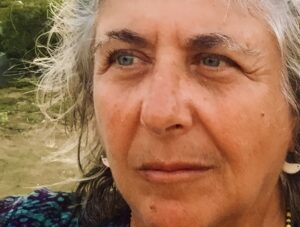
Marguerite Holberg
By 1995, HotHouse was a well- respected arts organization (although at one point when the landlords cut the power to our storefront we ran the club with extension cords up to the friendly artist studios above us.) The Wicker Park scene in those days was a village of similar start-ups with arts enterprises mixing it up with the Puerto Rican organizers trying to maintain the working manufacturing class jobs still in the area. As that area was eclipsed by voracious real estate transformation, our lease became part of the maw of profit and we were forced out.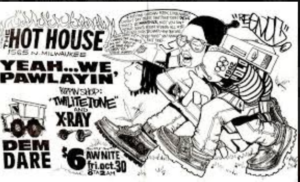
The new HotHouse exploded with sometimes three shows every night. The weekends were full of student trainings, after school programs and a primary space for the collection of downtown universities to use for their off-campus events. Our reputation allowed us to attract world famous artists. The focus on African diaspora traditions stayed at the forefront of our focus and most of the artists touring out of Cuba, African nations, Afro-Latin and Afro-Caribbean locations were featured at HotHouse. By 2006, more than 70,000 people a year were attending our events.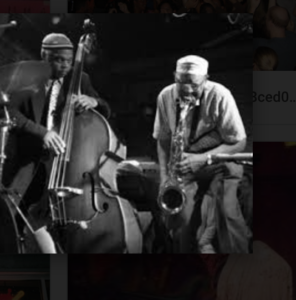

We see our work both in this Covid-moment and with the same basic tools we have always worked with – to use creativity- historical inspirations, collective organizing of like-minded cultural workers –to maximize resources by relying on volunteers and donations and devising compelling pedagogical projects as the way forward. While we are endeavoring to build the new bricks and mortar HotHouse and a multi-purpose sanctuary for progressive culture, at the same time we are championing new technological ways to produce culture while venues are shuttered. We are broadcasting online content from places around the world, tapping into our relationships of artist and curators and most recently produce the concert for Cuba that reached more than 15 million viewers.
Since 2009, our work has been itinerant and trying to keep HotHouse alive. We blew on the ashes to keep the embers lit and each year were able to do a little more –with nothing- just the people who believed in our vision.
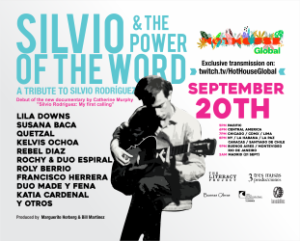
2020 HotHouse program. Chicago remains a force in music and culture.
We approach this Covid-moment with the same basic tools we have always worked with – to use creativity- historical inspirations, collective organizing of like-minded cultural workers –to maximize resources by relying on volunteers and donations and devising compelling pedagogical projects as the way forward.~Marguerite Holberg
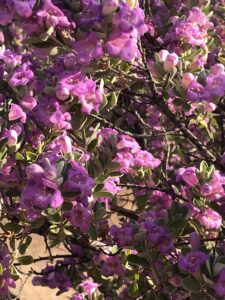
Lorraine García-Nakata
Lorraine García-Nakata is a recognized visual artist that has exhibited extensively on a national and international level. Adept in a range of visual art mediums, Lorraine is noted for her large-scale works in drawing and painting. She is also recognized for her command of mixed media, printmaking, installation work, ceramics and sculpture.

Lorraine García-Nakata. (Photo credit:Penny Biaggi )
“I am an artist that navigates between disciplines (visual art, music and writing). For a woman, particularly a woman of color, it is a political act to commit a lifetime to the creative process. My life experiences inform my work and my work informs my life in return. A finished piece often shares something I need to know.”–Lorraine García-Nakata, RCAF
Anger to Wisdom, Wisdom to Strength
I wrote this before the pandemic hit our collective ear. I had been feeling for years prior, that something was coming.––something that would challenge the way we ask questions and seek answers. Now fully into the world-wide, human-wide pandemic, the purpose of these thoughts are more clear.)

“Most recent pastel on paper drawing (my usual 7 foot scale), entitled “]’Wisdom to Strength.’ Also, not yet exhibited or formally published. One image includes me standing next to it to show scale.”
What does it look like, feel like, after the fight? This is the question the exhibition Anger to Wisdom, Wisdom to Strength asks. If we do not make time to answer this question, we are destined to repeat an overly worn human journey––by attempting, even making “change,” yet not fundamental change.
In the face of severe injustice, we push back and fight, because we must. History, and what we are again witnessing, reveals that this is a necessary response. As we each feel and process the shock, horror, and anger when witnessing or directly experiencing deep injustices, we each decide ways to assert that we cannot be silent or allow horrific actions to stand. Our responses may be organized, and in other instances, the responses require spontaneous and more immediate human reaction. Women, and more recently, the voices of very young children have had great power. Their level of urgency has pierced a membrane forcing messages to be heard over the collective noise. It is an appeal to our humanity.
Over decades, I have been shocked, horrified, and angered multiple times. Many of us have. That shock has required that we march, speak, write about it, or initiate art pieces that express outrage. While outrage may have ignited my creative work, that outrage then navigated an internal terrain that pressed back on me, asking, ‘What do we affirm for ourselves, as humans, once the fight is won? If we were to acquire all we seek, how are we fundamentally changed and how does that change feel? What does our next stage of human development look like?”

(Pastel on Paper, 7feet x 6 feet, 2019 )
This process, this journey also insists that as we envision our next level of human potential, that we grasp that humans are not the highest of all living forms. Instead, we are inter-dependent with other living things. This “precious knowledge” allowed Indigenous people to survive and flourish for millennia. It is in our cell memory. This wisdom is there for us to hear and receive once we are ready. So as we continue our necessary and urgent protests, we may now also be ready to ask ourselves deeper questions. Certainly, some very young children and elders are ready to share what they “know” in order to help guide this work.~ Lorraine García-Nakata
I Dream, Just Like You (lyrics, music, vocal and guitar by: Lorraine García-Nakata; Piano: Lee Parvin, Recorded: Lee Parvin Studio, Pacifica, CA:)
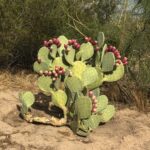
Nacha Mendez
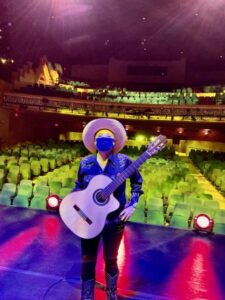
“The color photo on stage was shot at the Lensic Performing Arts Center by my colleague violinist Carla Kountoupes. We had just finished recording a set of music for their Ghost light Sessions. 8/2020”
Artist Statement: Nacha Mendez (1958, Chicago, Illinois, the United States. Currently resides in Santa Fe, New Mexico)
I am an internationally known, award-winning composer/performer trained in Latin World music, and experimental forms. I am also a singer and guitarist. I have for many years explored Electro-acoustic music. My work merges sounds and concepts from the American/European experimental music tradition as well as Latin Music from all the Spanish-speaking countries, Avant-Folk and Jazz traditions.
Throughout my professional life, I have sought to create my path because I know no other way. I learned early on, that music had great potential to heal through singing and so this is what I have done for many years.
My focus since childhood has been art and music and the lens I have used. Consequently, music and art have never let me down and I have had a rewarding career that took me away from the small town of La Union, New Mexico.

Nach Mendez
While Covid-19 has affected and terminated my weekly engagements, all is not lost as I have more time to focus on composing.

Nacha Mendez, being smart and looking sharp during COVID-19.
I am most interested in creating works for small-scale opera, new music theater and film. I feel that the lens from which I see through (because I see the music before I hear it) has become wider, maybe a bit distorted but always with a delicate balance of intensity and beauty. ~Nacha Mendez
Take a listen:
Joey Kim (poetry)
A SIJO PRAYER1
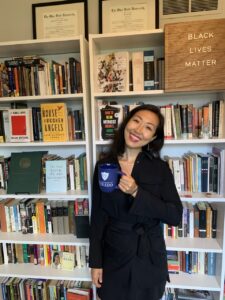
The mid-day tide rolls in, and I dream of my Korean ancestors.
Although their words are foreign, the water tugs me to join my hands—
for sun, for salvation— waves tongue the shore and force language.
(1. Poet’s note: 1 This poem is written in the traditional Korean form of the sijo, a verse form comprised of three lines of 14-16 syllables each, used since the Korean Goryeo period (918-1392 A.D.).
Dr. Joey Kim is currently a visiting assistant professor in the English Dept. at a Midwestern university.
Luis Alberto Ambroggio (poesía)
Situaciones
I
La verdad
me arroja en un pantano
sin azules
ni palabras compañeras.
II
No puedo encontrar
los ecos.
El aire miente.
La luz engaña.
III
Vivir en el poema
podría abrir la ventana
de una mentira prometida
y en la fábula recrear
la ilusión de la salida,
de otros encuentros.
IV
Sobreviviendo el engaño
se gana la batalla,
canta el sol,
la luna brilla
con los amigos del tiempo.
V
Años en el futuro regresarán
a los jardines de primavera.
Sin el murmullo del agua
y la oscuridad que prolongan las paredes
tortura y silencio respiran
los pulmones amenazados.
El crepúsculo crece.
No hay redenciones de luz
que abran las alas
para llenar el espacio de melodías
besando la hermosura de los ojos
en los valles de cuerpos que se llaman.
Deseos para el mundo que amamos
sin enemigos de vida:
habrá blancura en los rostros
como en el cambio de estaciones
y el brote de los sueños
en labios, cuerpos,
las puertas y ventanas abiertas,
que cantan la luz de la noche y de los días.
—
Areceli Esparza
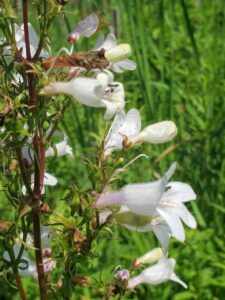
Photo Credit: Areceli Esparza
The following are poems part of a series that speak to human trafficking.
Hidden
She first
Then me,
We played
while our parents perched
Who let who run through the fence, I don’t remember.
But when we saw the lost snowflake fly away
and we followed,
the wolves chased us far
from the perching, from our parents
That’s when we began and
we held our breath and flew.
Chirp
We didn’t have parents, we had wolves
We looked at each other and saw little reflections
of memories of what our parents looked like
saw love in each other’s faces
but we also saw things that made us turn in silence
The Left side of him
The Right side of him
He the wolf
Us his most prettiest things
We don’t like pretty
We like song
Birth
and
Breast
In each other’s arms.
At Dinner
In my black dress and she in her white dress
She has her hair pinned
I have mine pressed
Our eyes fixed
We sit
Waiting
Worried who will knock at the door
The timing will be perfect, their entry will be violent
A raid
I hold my papers, she doesn’t have any, so she holds my hand.
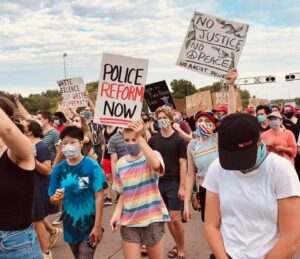
Photo credit: Areceli Esparza
~Araceli Esparza is a Latinx poeta. MFA graduate from Hamline University with strong migrant farmer roots, and recently published in the Astri(x) journal.

Thank you for check out Issue #7. Thanks to our contributors. Issue#8: Educators during Pandemic and Elections: Friday, October 16, 2020.
GUIDELINES:
Except for La Tolteca 2.0 images all contributing images of art and photos are previously unpublished and credited.
LA TOLTECA 2.0 had made its return here at www.anacastillo.net It is a virtual zine with ongoing posts.
You may submit to ana@anacastillo.net
You’ll receive an automated response. (If you don’t receive the automated response alert me on FB messenger) For consideration to the following new features only unpublished, never posted on SM, original images and material.
New L/T 2.0 Features
BOX 4B: Brown & Beautiful Babe-Boomers
You don’t have to be brown or a Boomer and your submissions don’t have to be selfies to submit. Send us what gave you a smile, lifted your spirits, kept you going that past week. Smart phone pics work, no specific format necessary. Do NOT send images previously posted on social media or elsewhere. Your submission is consent for use at L/T 2.0. Add a couple of lines with your name and about the pic or yourself to be included, if selected. If any of your submission is selected it will be posted the following Friday. If not, you won’t hear from us but you will be welcome to send something new for consideration again.
Yo ¡Presente!
No rants or editorials, please. Only clean, proof-read submissions in a journalistic style will be read for consideration. Double space, 12 point, Times Roman—750 words. Your most recent activist concern. Include your name and a line describing how you participate in social justice issues. Checklist for your piece: What, when, why who and how.
Poetry. Flash Fiction, Memoir and Testimonio
Original and unpublished work. Spanish and English languages considered.
All submissions must have been proofread double-spaced, 12 point, paginated. Fiction word count limit 750. Your name and one line about yourself or your submission.
La Tolteca 2.0 is a blog. We reserve all rights to post as and what we choose.
If your original works appear here you may use again elsewhere with credit to first appearing at La Tolteca 2.0 (and date.)
Thank you for reading, feel free to share link and all positive vibe comments welcome. Issue #8 with more fabulous creatives, thrivers and survivors on Friday, October 16 2020. You don’t have to be brown and a babe boomer to submit but if you are, we are here for you. We are present and forging on through next elections.

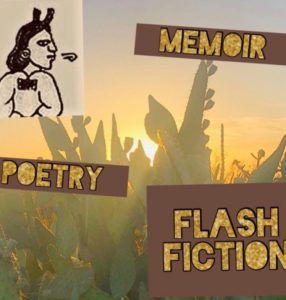
1 Comment
Grace Purpura October 04, 2020 - 22:54
So glad to see such diversity and inclusion of new voices and talent in your present issue. . . a rich tapestry of humanity. Thank you Ana Castillo and all the artists and poets. Keep doing what you are doing. It is food for the soul.